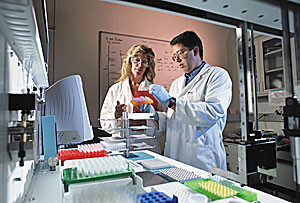According to a study that has been published in Nature Communications, cells, and the genes inside, continue to function long after the individual they belong to has died.
A team of scientists analysing post-mortem samples found that some cells may even become increasingly active following the death of the individual.
This is likely to represent an important informational building block and the scientists that conducted the analysis are hoping that the information can be developed into a forensic tool.
Within the cells of our human bodies, our genes do the work behind the scenes so that we can live the life that we do. Our genes’ output is controlled by a variety of internal and external switches.
Being able to understand each individual gene and how it works gives us a detailed insight into what it is doing both when we are healthy and at times of illness.
Our genes are stored in the DNA of our cells and once they are switched on, RNA transcripts are made. These RNA mostly become the blueprint for proteins with some controlling what goes on in a given cell.
The RNA transcripts are what is often measured by scientists when they want to understand what is going on inside of a cell. This process is called analysis transcriptomics.
When analysing a body, scientists will take samples of tissue and organs to gain an understanding of what was going on inside the person’s body during life.
The question that arose for Professor Roderic Guigo, a computational biologist at the Barcelona Institute for Science and Technology, was whether the regular happenings of delayed post mortem analysis.
He said that following death you would expect there to “be a decay in the activity of genes” and thus it would influence the analysis.
In order to test this hypothesis, the professor and his team collected a variety of post-mortem samples within 24 hours of death and also blood from patients who are still alive. They used advanced mRNA sequencing on the specimens and found surprising results.
Mr Guigo said that there was “a reaction by the cells to the death of the individual” and that “some genes are activated”.
The study provided predictions as to the post-death RNA level changes across a wide range of regularly analysed tissue. This can then be used for future transcriptomic analysis.
There is still much testing to be completed but with further consolidation and testing, it may be possible to use these findings for future criminal investigations.

